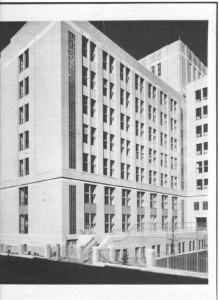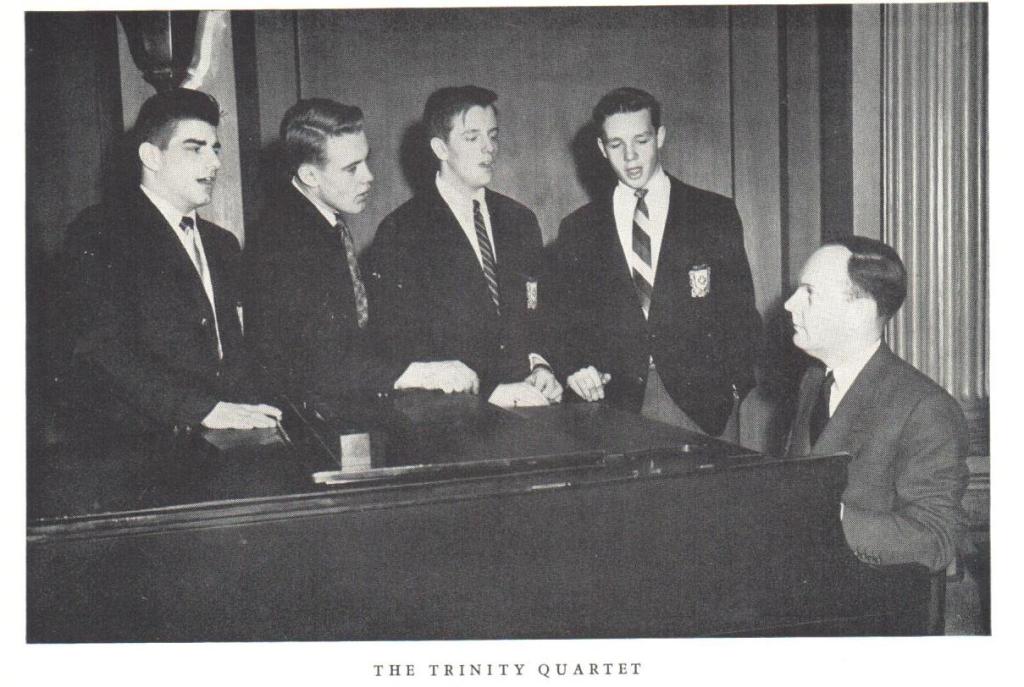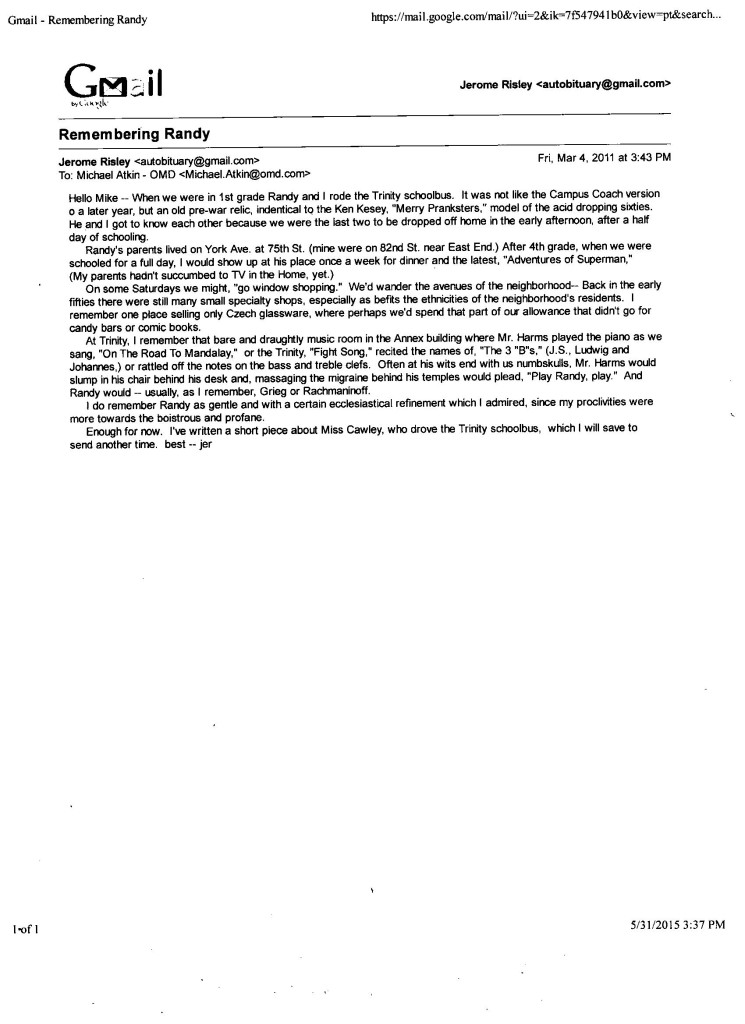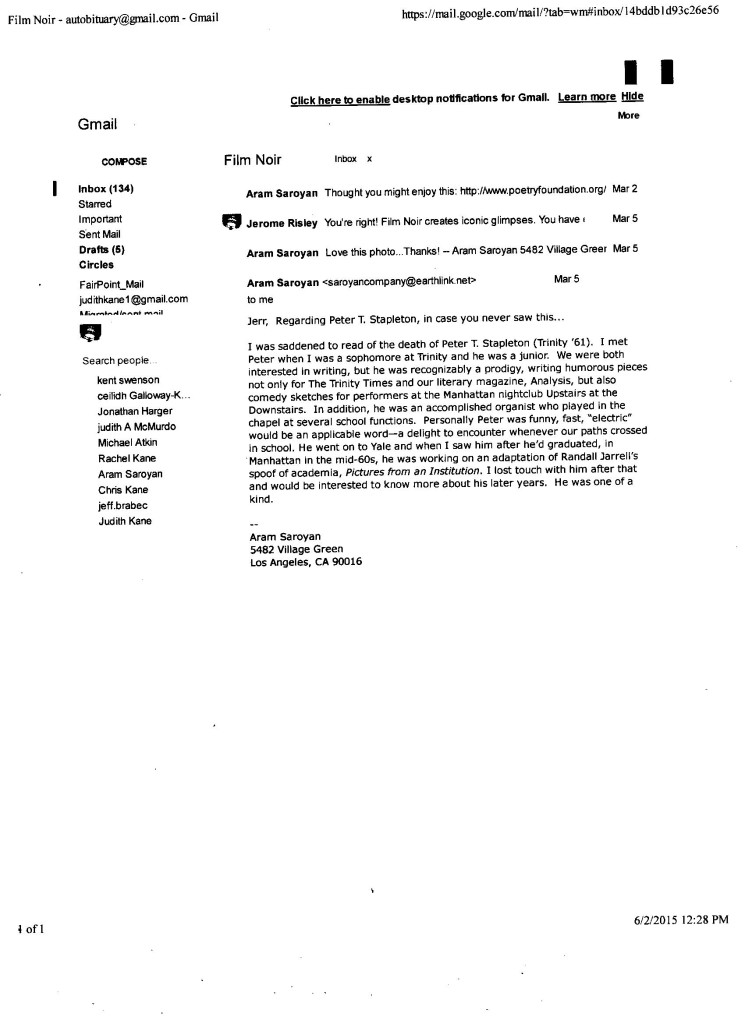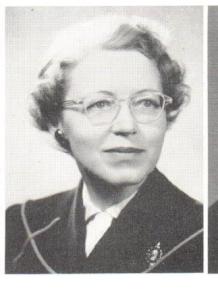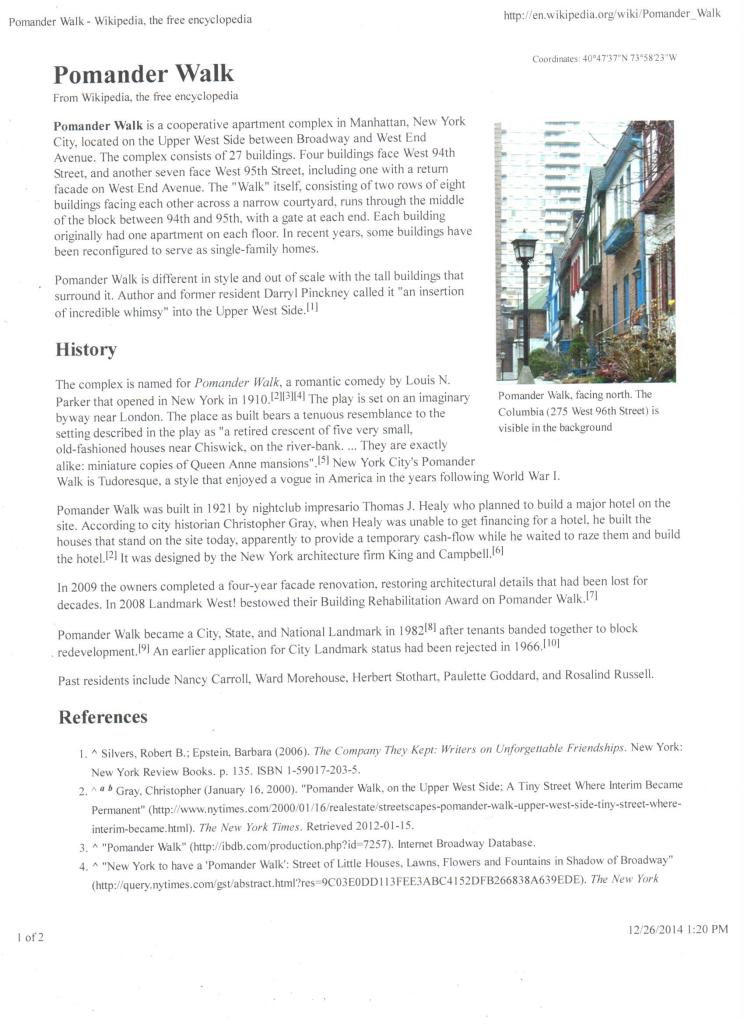Life: Exiled to The Annex
On Inauguration Day for Dwight Eisenhower, Mrs. Oexle had her forth grade students stand at attention and face the flag on top of Joan of Arc public high school, a block away, while the presidential oath was administered. Joan of Arc students were housed in very tall art deco building with a flag pole stuck up on the roof, a block away. So, on this windy January day their national ensign was streaming and visible out of our classroom window from the back of the old building referred to as ‘the Annex.’ The only flag ever displayed from Trinity’s 19th century battlements hung over the front entrance to the Main Building at 139-145 W. 91st Street. It was not visible from the back of the Annex which overlooked the sere and pebble strewn compacted earth of the athletic field
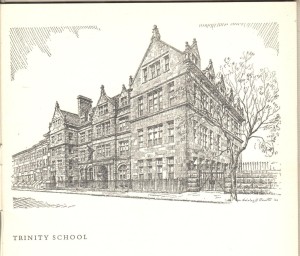
The Main Building as glorified in 1936. The unheated passageway to the Annex existed behind the gate but has been made to disappear along with the whole of the Annex (empty space on the right.)
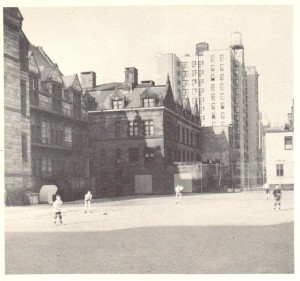
To the left is the Annex Building (with the fire escape) The rear of the main bldg and the flat roofed chapel can be seen too.
The Annex, accessible from the Main Building only by way of a covered brick-lined, unheated passageway, had been the rectory for St. Agatha’s chapel which had been demolished in 1944.. St. Agatha’s footprint remained a rubble strewn vacant lot, an extension to ‘the dust bowl’ playing field in which athletics were attempted. The opposite end of the Annex still showed the external scars where the chapel wall had once been attached. So, the Annex, this mid-nineteenth century remnant predated and, obviously, influenced the choice for the architectural style of the Main Building when it was erected in 1893-5.
The main entrance to the former rectory, as impressive even as the Main Building’s, was not used and kept locked, although once inside the double doors it presented an impressive flights of stone steps and balusters leading to a lower floor and reaching up to the landing above. This front door was no longer used. As a result of some renovation, the stairs now led no where except anticlimactically up to — ‘The Trinity Exchange,” and down to Mr. Wilson’s workshop where he taught woodworking classes. Once a week, on Friday’s, the women of the Trinity Parent Organization — they were all women back then — would open the doors and students were allowed a few minutes to visit the stockpile of previously owned apparel, toys, games, books, sports goods. etc.
The corridor to the right of the ‘exchange’ doors led to the Band Room where instruments not on loan to musical vertuosi were stored. Almost as an afterthought, two of the oaken pews left over from the recent renovation 0f the chapel could be found facing each other in this room. They joined several folding metal chairs as seating for Mr. Harms classes in music appreciation.
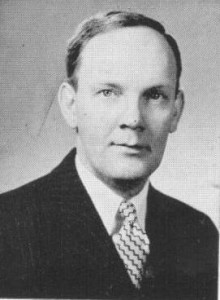
By the end of music class Mr. Harms would slump in his chair, and with hand to furrowed brow would call on the only musician in the class. “Play Randy, please play.” And Randy T. would: always it was Grieg’s only piano concerto until the bell.
Mr. Harms was a put upon man whose pedagogic skills were wasted on most of us. So he limited our musical education to the mnemonics for the notes of the bass and treble clefs: f.a.c.e. (obvious,) e.g.b.d.f. (every good boy deserves fun,) g.b.d.f.a. (grizzly bears dig for acorns,) a.c.e.g. (all cows eat grass,) and that Bach, Beethoven and Brahms all had names beginning with the letter, ‘B.’ We were also expected to give forth in song. Loch Lomon, The Road to Mandalay, Swanee River, Oh! Susannah, The British Grenadiers and The Trinity Fight Song was about it for our repertory. When he wasn’t putting up with us, Mr. Harms led the Glee Club in its appearances around the city and performances of ‘Messiah,’ joining with the sopranos and altos supplied by a school whose student body was all female. He was most visible every morning at chapel service, where as a Fellow in good standing in the American Guild of Organists (F.A.G.O.,) he played, provided tempo and tried to help us keep in tune with the hymns we sang. He also provided the entrance and exit music so we might look orderly and not trip too often.
Mr. Harms may not have taken much pleasure in teaching most of us but in my memory there were several students who found a mentor in Mr. Harms and he must have felt it all worth while. The first was Randy Tollefsen:
The second of whom Mr. Harms could be proud was a year or two ahead of me. I knew he was not like the others of us. He wore thick glasses and no classroom master ever seemed to have told Charles Wourinen to get a haircut or to at least comb his hair. This otherworldly truth was born out to me one morning when Mr. Harms was not at his usual seat playing the organ as the school filed in for morning chapel. Instead Young Wourinen, barely into his teens, was busy at Mr. Harms’s bench flailing away– all stops pulled, hands on both keyboards and feet flying over the pedals as he filled the space with wonderful sounds. I was ready to hand him his MacArthur Grant then and there if I had known what it was.
It was with such wonderment I discovered such musical exceptional-ism among us mortals during my years at Trinity. “Parent’s Night” was a magical evening not only because The School was transformed by the darkness outside and inside into a showcase for student talent for the proud adults who came to see them. I loved it all. My wonderment was complete when once I witnessed a young upperclassman named Morehead (I think) seated at the piano bench busily transcribing music to new sheets in a different key he was soon to perform as accompanist to a soloist waiting to go on, “NEXT!” His confidence and aplomb then so impressed my impressionable self as it still does now.
And then there comes to mind Peter Stapleton.
(reply to Aram’s obit for Peter Stapleton)
Some research has tested the possibility that each time a memory is brought to mind, the act of recalling re-shapes details and steers inferences in nuanced ways so that the memory itself evolves from the original experience.
I wonder! Let me ask. Let me see if my memory compares with Aram’s own recall – I put Aram in this experience – unless it was always all just a dream allegory of my own devising as I tried to define the dynamics of our relationship back when we were schoolchums.
If my memory serves Aram and I have found ourselves in suburban Westchester or Fairfield county, enticed on an after-school trip by Peter. I remember the time as a an afternoon in late winter — a thaw is occurring and snow melt drips from the eaves and puddles on the plowed walkway leading to a small, white sided, steepled, Episcopalian church before which we three stand. (Peter’s father had worked on Trinity church business in Mr. Bruner-Smith’s office.)
How we got there I have no memory – probably by train—but I know it is Peter who has ‘coaxed’ us willingly on this ‘adventure’ with him. But, my memory of Peter’s appearance is vivid — It is always that of a diminutive adult — debonair in the long dark wintercoat and fur collar of a theatrical impresario.—a regular Sol Hurok with a puckish smile and turned up nose, rosy from the nipping cold..
He has kept us in the dark as to the purpose of our trip as he leads us around to a side door. Are we up for some teenage prank? Some bit of petty vandalism? At the door he rummages deep, — and with a flourish—produces a key. So,with no one about we are not going to have to break in.
Once inside, there is no heat, and the shafts of late afternoon sunlight stream sidelong through the tall tinted gothic panes and over the backs of the unoccupied pews. Peter has been here before and walks purposefully to the choir loft to one side — opens the electrical box and toggles several switches to illuminate the organ console and banks of pipes rising behind. We can hear the fans hum as the bellows fill with air. He arranges himself on the bench and briefly fiddles with the stops and pulls of the instrument before him and skates his now stockinged feet over the array of wooden pedals beneath him.
“Maintainant, mes amis, ecoutez!”
And so, Aram and I are thus dumbstruck with pleasure as Peter launches into a performance of voluntaries and fanfares of thrilling wonder.
When he had finished his concert rehearsal he closed up and the three of us returned to the city.
A decade later, having lost touch with Peter in the interval,–– I found myself walking up Madison Avenue when my eye was caught by the photograph for the cabaret artist being featured at the Café Carlyle. I did a double take. I was certain I was seeing a happily smiling head shot of Peter Stapleton . Of course, it was actually a candid of Bobby Short grinning at me from the photo complete down to the overcoat with the fur lapels… But for a moment there, my memory of Peter and that afternoon in that little church in suburbia came alive for me once again.
I learned much later that Mr. Harms had a life other than at Trinity. He headed a respected community music center in Suburban New Jersey that was eventually renamed in his honor.
My music education continued after school while I waited to use my new school-bus pass to get home. Egan’s was a large ground floor store which about the time of the first world war must have catered to the neighborhood’s needs — especially, for sheet music of which Egan’s a a great amount in stock. Now however, most of their business now involved the display case beneath the glass counter by the cash register. There, for school boy’s headed home was the display of waxy disguises — teeth, lips and moustaches, along with candy dots on paper, and other assorted penny candies and bubble gum cards. Two series of trading cards were offered along with the usual Topp’s cards of baseball players and teams. One was called Fight The Red Menace and tried to educate us in words and pictures of the dire fate awaiting America should we allow the communist victory to occur. I’m sure Joseph McCarthy had his own collection. My real interest was consumed by a series called Wings. My collection ended with almost a complete set (200 cards) of all the aircraft types from World War II ( still in my pre-adolescent memory) having only ended seven years earlier.
As with any building adapted from its original purpose to another use, the interior layout and design once suited to a rectory, was reconfigured to Trinity’s new requirements. Rooms were resized downward, while the ceilings remained cathedral, and hallways that once led to something became passageways to nowhere. Vestiges remained of the once elaborate decor — wooden paneling and wainscoting, period light fixtures and parquet floors — But where renovated, the replacement walls, partitions and flooring were functional — paint on plaster walls and linoleum covered the marquetry .
To my young mind I had the sense that we 3rd and 4th graders, our teachers, and the other instructors of non core curricula, and for school activities of secondary import, had been shunted off to ‘magical exile’ from the Main Building and its purpose of creating ‘adults.’ I don’t know whether this was meant as a step in the process of our assimilation. After all, this was the first time we spent the whole day away from our homes — not just a morning of schooling before boarding the school bus and a return to our real world. Although we were grown beyond the 1st and 2nd graders, who went home at noon, we may still have been thought too fragile to be trampled in the crush of upper class-men and the Hurley-burley of activities in the Main building. The Annex was a sanctuary and our castle.
For me this feeling was further enhanced by a large mural. On the top floor, under the gabled roof of the building was an theater with a stage. Within the triangular space above the arch of the proscenium was this wonderful painting of characters of childhood fantasy and fable. Painted in the tradition of book illustration developed by N. C. Wyeth, Maxfield Parrish and Howard Pyle, It illustrated Mother Goose rhymes, and depicted figures from fairy tales. No matter why we were ‘assembled’ in this auditorium, usually to watch an industrial film extolling the benefits of Alcoa Aluminum projected on a temporarily erected screen, my attention was almost always drawn to and remained focused on the stories portrayed in the mural .
Below the 3rd and 4th grade classrooms was the Art Room. Filled with tables and easels, large pads of newsprint, paper, charcoal sticks a large tub of damp clay, crayons and colored pencils, It was a shame we only got into the place once a week. Mrs.Rogers presided over our efforts She always appeared as befits a regular teacher, neat and bourgeois (no leotards for her.) But in her heart she was a true bohemian.
She often took us out of the art room for a bit of plein aire instruction. Central Park or down to Riverside Park and the ‘soldier’s and Sailor’s monument’ we our usual destination but once she took the class home with her. Wonderful! A bit theatrical and a bit bohemian, Mrs. Rogers apartment was located in Pomander Walk.
